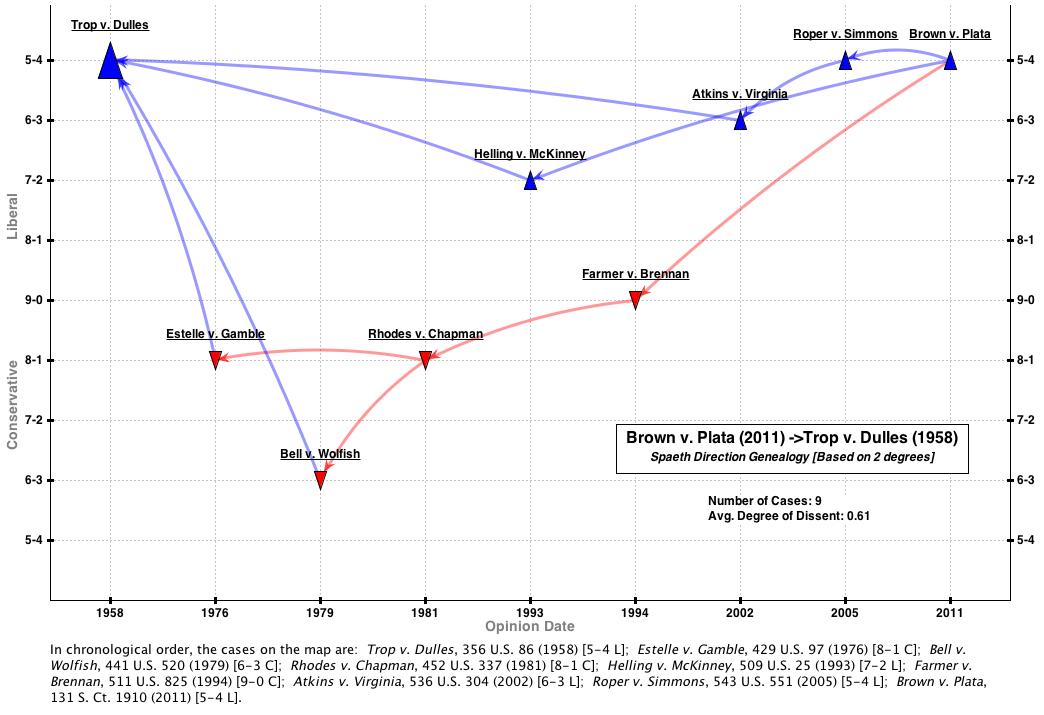Hacking complex systems can improve them. White-hat hackers can open up needlessly closed systems, knock down senseless limitations, and then make connections and create solutions that improve that system for everyone. So here’s a thought: our system of mass incarceration needs some white-hat hacking. It serves no one well and breeds violence and misery in our society.
Luckily, conversations are happening. Just last week, the MacArthur foundation announced a $75 million “long-term strategy of investment in local reform, research, experimentation, and communications aimed at addressing over-incarceration by changing the way America thinks about and uses jails.” Conservatives and liberals now admit we have a problem and so the climate is right for hacking this problem.
Here at In Progress, we hope to contribute to collective efforts by hacking Supreme Court doctrine. The idea is to open up the law around prisons and make connections to help generate anti-mass incarceration constitutional arguments. What’s more, the goal is to crowdsource the connection-making process. To do this, I am experimenting with doctrinal map designs to facilitate non-specialist learning of complex doctrinal systems.
Last time, I charted out a series of Eighth Amendment doctrinal networks and found them large and unwieldy. It’s not realistic to expect anybody to read over 100 Supreme Court cases while mining for anti-mass-incarceration arguments. So this time, I want to narrow the focus. Below find the 2-dgree citation network linking the Court’s 2011 prisoner overcrowding decision Brown v. Plata to 1958’s Trop v. Dulles, a seminal pronouncement about the Eighth Amendment’s meaning as a guarantee of human dignity in light of evolving standards of decency.
Note the new design feature of the map above: its interactivity. Click on the map and then click on any of the opinions. You’ll find yourself looking an HTML deck that (a) has a very quick summary of the case holding; and (b) contains links to open resources about the case provided by CourtListener, Cornell Legal Information Institute, Oyez, and the Supreme Court Database. Some of the decks also contain other potentially useful information — check out the Brown v. Plata deck as an example (make sure you tap your right arrow key!).
As the above map demonstrates, legal hacking is a collective activity. If the map helps at all, it is only because it leverages free resources provided by great organizations doing great work. The HTML Deck platform is an especially cool free resource created by Dave Zvenyach, the 2014 DC Legal Hacker of the Year. His example should inspire us all to tinker and build and seek creative solutions.
Before signing off this post, let me return to the mass incarceration problem. While the map above does not provide any answers or pre-packaged strategies for ending this national problem, it does suggest an initial research agenda for putative doctrinal hackers. Technology won’t do the reading for you, but it can making your reading about the Supreme Court and prisons more directed and efficient. Does Eighth Amendment doctrine contain good arguments against mass incarceration? Maybe this map can help you look.


Interesting project. But isn’t overcrowding just a symptom rather than cause of mass incarceration? Maybe you should look at Eighth Amendment caselaw around sentencing. In Ewing v. California, for example, SCOTUS upheld California’s three strikes law. That couldn’t have helped.